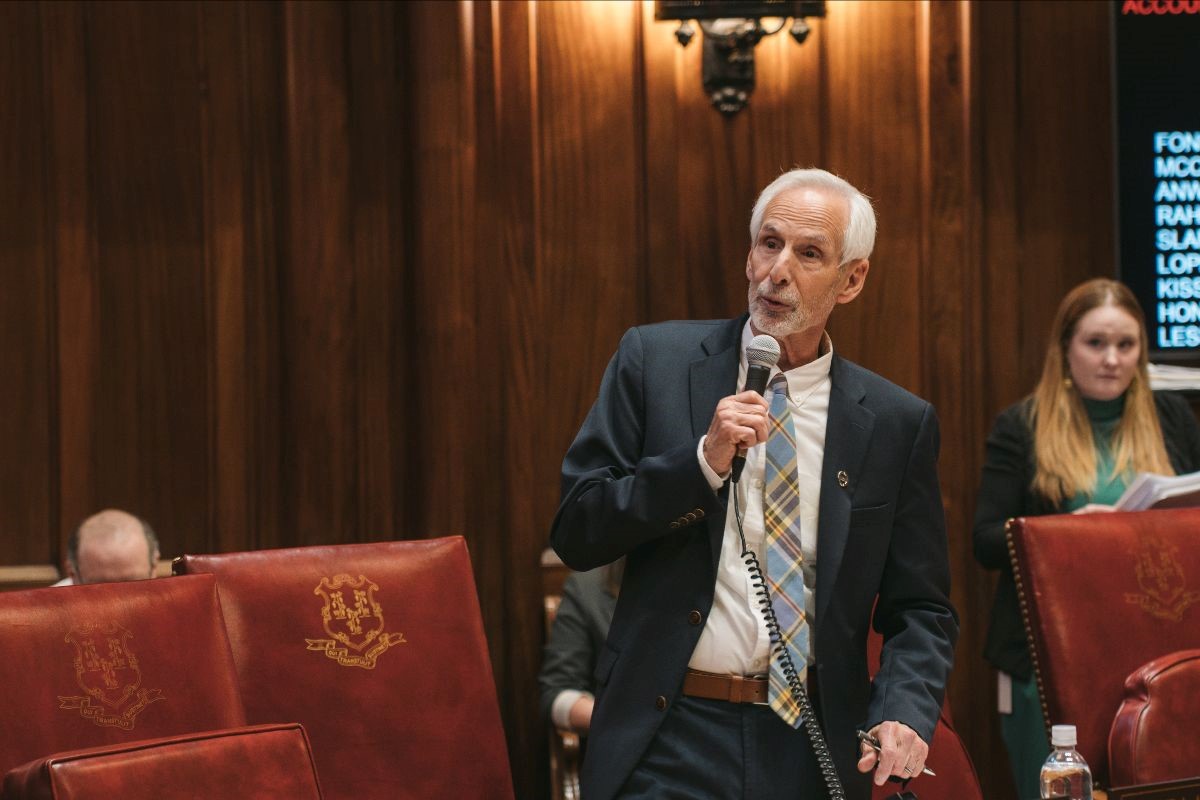SENATE ADVANCES RATEPAYERS FIRST ACT CUTTING NEARLY $800 MILLION IN CONSUMER ELECTRIC CHARGES IN NEXT THREE YEARS

Today, the State Senate advanced the Ratepayers First Act, detailed, intensive energy legislation that seeks to enact short- and long-term improvements to consumer electric bills, delivering long-sought savings that can provide financial relief to residents. In its short-term focus, the legislation will cut consumer electric costs by nearly $800 million in the next three years by shifting charges and changing current investments while improving long-term review and reforms to increase consumer protections to control future fluctuations in energy costs.
Amid Connecticut’s energy costs, which have sparked controversy in recent years due to fluctuations in the state’s power grid, record-high summer temperatures, global pressures including Russia’s invasion of Ukraine and the state’s reliance on a volatile natural gas market causing sharp changes in electric bills, this bill is hoped to save electric ratepayers hundreds of millions in coming years. It is also designed to recommit state utilities to transparency and accessibility, review the state’s energy policies thoroughly and work toward reforms supporting consumers and the long-term reliability of the electric grid.
“The people of Connecticut demand and deserve relief on their energy bills. Today, we’re giving that to them. This is a Senate Democrats bill, but it’s a true bipartisan piece of legislation borne out of a desire to fix this problem,” said State Senator Norm Needleman (D-Essex), Senate Chair of the Energy and Technology Committee. “This is an extremely detailed and thorough piece of legislation looking at our energy present and our energy future with equal levels of importance. It will achieve hundreds of millions in cost savings for consumers while ensuring a better long-term environment for our state to achieve its power generation and sourcing goals. After months of intensive work, I’m proud of our results and know they will represent relieved pressure on many.”
“Senate Bill 4 listens to the people of Connecticut and makes a concerted effort to find reductions and savings for electric ratepayers,” said Senate President Martin M. Looney (D-New Haven). “I applaud the efforts of my colleagues to identify hundreds of millions of dollars in efficiency and cost improvements that will add to recently lowered rates and relieve the state’s ratepayers. It’s similarly important for the bill to protect state lineworkers from dangerous working environments, engage with studies of future strategies to achieve further electric rate efficiencies and delve into long-term investments to shore up the safety and security of our grid.”
“The people of Connecticut deserve a better power grid, and Senate Bill 4 works to deliver that,” said Senate Majority Leader Bob Duff (D-Norwalk). “We can invest state resources in a more efficient manner to achieve stronger long-term return while shifting costs to deliver short-term gain, all without losing sight of making sure people understand how the grid’s changes impact them. I’m encouraged to see this collaboration between so many stakeholders and grateful that we’re finding real benefits to support our communities.”
Senate Bill 4 takes a variety of steps including cost savings with short- and long-term achievement goals and review and improvement to current policies. The bill passed the Senate by a 34-1 margin with one recusal and now heads to the House.
Short-Term Cost Savings
The bill authorizes $250 million in general obligation bonds in the next two years to support hardship payment recovery, intended to reduce consumer debt accumulated due to hardship during the COVID-19 pandemic and the spike that all ratepayers incurred as a result of the invasion of Ukraine. Shifting that debt to bonding will enable direct savings for consumers.
It authorizes another $50 million in general obligation bonds in the next two years to support state electric vehicle charging programs, while also placing limitations on that program to further rein in costs.
The bill also lowers required percentages of electric power generation through renewable resources through 2030 to save customers money without sacrificing long-term investment on environmental friendliness. Lowering this percentage can represent $75 million in cost savings by omitting generating resources like landfill gas, biomass and some aspects of fuel cells.
By updating definitions used for rate reduction bonds, the state’s bonding process can support certain storm repair recovery costs, representing savings of just over $100 million.
Long-Term Cost Savings
In a long-term approach to energy efficiency, Senate Bill 4 also updates rate reduction bonds to support additional means such as smart meters. Smart metering being covered via bonding allows state utilities to pursue investment of up to $1 billion in future upgrades without those costs being applied to consumer electric bills, especially important as those investments would be recoverable if enacted by distribution companies.
A new provision adjusts the state’s energy procurement strategies, with electric purchasing direction focused on lowering costs, keeping customers’ delivery stable and electric companies being required to purchase some energy themselves based on market prices, delivering savings by protecting against a volatile energy market.
The bill also seeks to improve state collaboration with the Public Utilities Regulatory Authority, allowing it to select third-party entities to implement clean or renewable energy programs, expanding the market in which it can operate for maximum efficiency. PURA will also evaluate time-varying electric rates to incentivize improved efficiency, seeing if such a model works in Connecticut.
Additionally, PURA will study renewable tariffs and the state’s low-income discount rate program for means of savings, with further study of time-varying rates and grid-enhancement technologies seeking further improvements.
Reviewing And Improving Current Practices
Under this legislation, the Office of Consumer Counsel will prepare an explanatory report about public benefits charges for consumers, while electric distribution companies will work alongside it to design an education and engagement program aimed toward the public.
The low-income discount rate program will also undergo review at the end of a three-year period starting July 1, 2025 when its new form is enacted for the first time for Eversource and United Illuminating customers.
Senate Bill 4 also protects lineworkers, who perform important tasks to keep the grid operational, and addresses direct concerns they raised with legislators. Lineworkers will be made part of an emergency service restoration planning committee that delineates training, safety and health measures, and electric distribution companies will be prohibited from requiring crews to work in unsafe conditions.
Among additional elements of the bill, there is a review of possibilities for new nuclear capabilities in the state and a reduction of required use of renewable energy in some instances, specifically where renewable sources are more costly than efficient for state needs.
Share this page:
